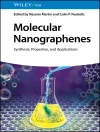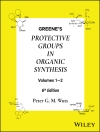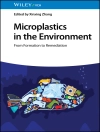Retaining the proven didactic concept of the successful ‚Chemical Biology – Learning through Case Studies‘, this sequel features 27 new case studies, reflecting the rapid growth in this interdisciplinary topic over the past few years.
Edited by two of the world’s leading researchers in the field, this textbook introduces students and researchers to the modern approaches in chemical biology, as well as important results, and the techniques and methods applied. Each chapter presents a different biological problem taken from everyday lab work, elucidated by an international team of renowned scientists.
With its broad coverage, this is a valuable source of information for students, graduate students, and researchers working on the borderline between chemistry, biology, and biochemistry.
Inhaltsverzeichnis
List of Contributors xvii
Introduction and Preface xxv
Abbreviations xxix
1 Real-Time and Continuous Sensors of Protein Kinase Activity Utilizing Chelation-Enhanced Fluorescence 1
Laura B. Peterson and Barbara Imperiali
1.1 Introduction 1
1.2 The Biological Problem 1
1.3 The Chemical Approach 3
1.3.1 Chelation-Enhanced Fluorescence 3
1.3.2 β-Turn-Focused Kinase Activity Sensors 7
1.3.3 Recognition-Domain-Focused Kinase Activity Sensors 7
1.3.4 Chimeric Kinase Activity Sensors 10
1.4 Chemical Biological Research/Evaluation 12
1.4.1 Kinetic Parameters 12
1.4.2 Assessing Kinase Selectivity 12
1.4.3 Kinase Profiling in Cell Lysates and Tissue Homogenates 14
1.5 Conclusions 14
References 15
2 FLi K and FLi P: Direct Binding Assays for the Identification of Stabilizers of Inactive Kinase and Phosphatase Conformations 17
Daniel Rauh and Jeffrey R. Simard
2.1 Introduction – The Biological Problem 17
2.1.1 Kinase Inhibitors – Stabilizing Inactive Enzyme Conformations 17
2.1.2 Monitoring Conformational Changes upon Ligand Binding 19
2.2 The Chemical Approach 20
2.3 Chemical Biological Research/Evaluation 23
2.3.1 Finding the Unexpected 25
2.3.2 Targeting Protein Interfaces – i FLi K 26
2.3.3 Screening Akt 27
2.3.4 Targeting Phosphatases – FLi P 29
2.3.5 Lessons Learned from High-Throughput Screens 31
2.4 Conclusions 34
References 35
3 Strategies for Designing Specific Protein Tyrosine Phosphatase Inhibitors and Their Intracellular Activation 37
Birgit Hoeger and Maja Köhn
3.1 Introduction – The Biological Problem 37
3.1.1 Chemical Inhibition of Protein Tyrosine Phosphatase Activity 37
3.1.2 PTP1B as Inhibitor Target 40
3.2 The Chemical Approach 41
3.2.1 The Concept of Bivalent Ligands – Development of a Specific PTP1B Inhibitor 41
3.2.2 Cell Permeability and Intracellular Activation of a Self-Silenced Inhibitor 43
3.2.3 A Prodrug Strategy to Gain Cell Permeability 44
3.3 Chemical Biological Research/Evaluation 45
3.3.1 An Affinity-Based ELISA Assay to Identify Potent Binders 45
3.3.2 Evaluation of Cell Permeability and Cellular Activity by Monitoring Insulin Receptor Signaling 47
3.4 Conclusions 47
References 48
4 Design and Application of Chemical Probes for Protein Serine/Threonine Phosphatase Activation 51
Yansong Wang and Maja Köhn
4.1 Introduction 51
4.2 The Biological Problem 52
4.3 The Chemical Approach 54
4.4 Chemical Biological Research/Evaluation 57
4.4.1 Selectivity of PDPs toward PP1 over PP2A and PP2B 57
4.4.2 Studying the Functions of PP1 in Mitosis with PDPs 58
4.4.3 Studying the Functions of PP1 in Ca 2+ Signaling with PDPs 59
4.5 Conclusion 60
References 60
5 Autophagy: Assays and Small-Molecule Modulators 63
Gemma Triola
5.1 Introduction 63
5.2 The Biological Problem 65
5.2.1 Assays 66
5.2.2 Small-Molecule Modulators of Autophagy 67
5.3 The Chemical Approach 68
5.3.1 Assays 68
5.4 Chemical Biological Evaluation 71
5.5 Conclusion 80
References 80
6 Elucidation of Protein Function by Chemical Modification 83
Yaowen Wu and Lei Zhao
6.1 Introduction 83
6.2 The Biological Problem 84
6.2.1 Small GTPases 84
6.2.2 Autophagy 85
6.3 The Chemical Approach 88
6.3.1 Expressed Protein Ligation and Click Ligation 88
6.3.2 Site-Specific Modification of Proteins 90
6.3.3 Semisynthesis of Lipidated LC3 Protein 94
6.4 Biological Research/Evaluation 97
6.4.1 Thermodynamic Basis of Rab Membrane Targeting 97
6.4.2 Monitoring Protein Unfolding and Refolding Using a Dual-Labeled Protein 99
6.4.3 Semisynthetic Lipidated LC3 Protein Mediates Membrane Fusion 101
6.5 Conclusion 103
References 103
7 Inhibition of Oncogenic K-Ras Signaling by Targeting K-Ras–PDEδ Interaction 105
Gemma Triola
7.1 Introduction 105
7.2 The Biological Problem 105
7.3 The Chemical Approach 108
7.3.1 Chemical Synthesis of Proteins 108
7.3.2 Synthesis of Lipidated Ras Peptides 109
7.3.3 Synthesis of K-Ras4B Protein 110
7.4 Chemical Biological Evaluation 113
7.5 Conclusions 120
References 121
8 Development of Acyl Protein Thioesterase 1 (APT1) Inhibitor Palmostatin B That Revert Unregulated H/N-Ras Signaling 123
Frank J. Dekker, Nachiket Vartak, and Christian Hedberg
8.1 Introduction 123
8.2 The Biological Problem–The Roleof APT1in Ras Signaling 123
8.3 The Chemical Approach 125
8.3.1 The Challenge to Make Small-Molecule Modulators of Protein Function 125
8.3.2 Bioinformatics – Target Clustering 126
8.3.3 Compound Collection Synthesis 126
8.3.4 In vitro Enzyme Inhibition Studies 129
8.3.5 Mechanistic Investigation on APT1 Inhibition 129
8.4 Chemical Biological Research/Evaluation 130
8.4.1 In vivo Enzyme Inhibition Studies 130
8.4.2 Palmostatins Inhibit Depalmitoylation of Ras GTPases 132
8.4.3 Palmostatins Disturb the Localization of Ras GTPases 134
8.4.4 Palmostatins Inhibit Downstream Signaling of Ras GTPases 135
8.5 Conclusions 136
References 138
9 Functional Analysis of Host–Pathogen Posttranslational Modification Crosstalk of Rab Proteins 141
Christian Hedberg, Roger S. Goody, and Aymelt Itzen
9.1 Introduction 141
9.2 The Biological Problem 141
9.2.1 Posttranslational Modifications 141
9.2.2 Adenylylation of Small GTPases 142
9.3 The Chemical Approach 143
9.3.1 Preparative Adenylylation of Rab 1 144
9.3.2 Identification of the Site of Adenylylation 145
9.3.3 Synthesis of Site-Specifically Adenylylated Peptides 146
9.3.4 Generation and Application of α-AMP-Tyr/Ser/ Thr-Antibodies 146
9.3.5 Detection of Adenylylation by MS Techniques 150
9.4 Chemical Biological Research/Evaluation 150
9.4.1 Functional Consequences of Adenylylation 151
9.4.2 Detection of Adenylylated Proteins in Mammalian Cell Lysates 152
9.5 Conclusions 152
References 153
10 Chemical Biology Approach to Suppression of Statin-Induced Muscle Toxicity 155
Bridget K. Wagner
10.1 Introduction 155
10.2 The Biological Problem 155
10.3 The Chemical Approach 157
10.3.1 Generation of a Compendium of Mitochondrial Activity 157
10.4 Chemical Biology Research/Evaluation 158
10.4.1 Chemical Epistasis Analysis 158
10.4.2 High-Throughput Screening 160
10.5 Conclusion 161
References 162
11 A Target Identification System Based on Morpho Base, Chem Proteo Base, and Photo-Cross-Linking Beads 163
Hiroyuki Osada, Makoto Muroi, Yasumitsu Kondoh, and Yushi Futamura
11.1 Introduction 163
11.2 The Biological Problem 163
11.3 Chemical Approaches 165
11.3.1 Morpho Base 165
11.3.2 Chem Proteo Base 166
11.3.3 Photo-Cross-Linking Beads 169
11.4 Chemical Biological Research/Evaluation 171
11.4.1 Npd6689/npd8617/npd 8969 171
11.4.2 Bns- 22 172
11.4.3 Methyl-Gerferin 173
11.4.4 Xanthohumol 173
11.5 Conclusion 174
References 174
12 Activity-Based Proteasome Profiling in Medicinal Chemistry and Chemical Biology 177
Gerjan de Bruin, Nan Li, Guillem Paniagua, Lianne Willems, Bo-Tao Xin, Martijn Verdoes, Paul Geurink, Wouter van der Linden, Mario van der Stelt, Gijs van der Marel, Herman Overkleeft, and Bogdan Florea
12.1 Introduction 177
12.2 The Biological Problem 177
12.3 The Chemical Approach 179
12.3.1 Comparative and Competitive Activity-Based Proteasome Profiling 181
12.3.2 Two-Step Activity-Based Proteasome Profiling 183
12.4 Biological Research/Evaluation 186
12.4.1 Identification of Proteasome Active Sites 187
12.5 Conclusions 188
References 189
13 Rational Design of Activity-Based Retaining β-Exoglucosidase Probes 191
Kah-Yee Li, Wouter Kallemeijn, Jianbing Jiang, Marthe Walvoort, Lianne Willems, Thomas Beenakker, Hans van den Elst, Gijs van der Marel, Jeroen Codée, Hans Aerts, Bogdan Florea, Rolf Boot, Martin Witte, and Herman Overkleeft
13.1 Introduction 191
13.2 The Biological Problem 191
13.3 The Chemical Approach 192
13.3.1 Development of a Human Acid Glucosylceramidase Activity-Based Probe 195
13.3.2 Cyclophellitol Aziridine Is a Broad-Spectrum Activity-Based Retaining β-Exoglucosidase Probe 198
13.4 Biological Research/Evaluation 201
13.4.1 In situ Monitoring of Active-Site-Directed GBA Chemical/Pharmacological Chaperones 201
13.4.2 Mapping of Human Retaining β-Glucosidase Active Site Residues 203
13.5 Conclusions 203
References 205
14 Modulation of Clp P Protease Activity: from Antibiotics to Antivirulence 207
Malte Gersch and Stephan A. Sieber
14.1 Introduction 207
14.2 The Biological Problem 207
14.3 The Chemical Approach 209
14.4 The Discovery of a Novel Antibiotic Mechanism 210
14.4.1 Target Identification 210
14.4.2 Target Validation 214
14.4.3 Mechanism of Action 214
14.5 The Antivirulence Approach 215
14.6 Conclusions 219
References 219
15 Affinity-Based Isolation of Molecular Targets of Clinically Used Drugs 221
Shin-ichi Sato and Motonari Uesugi
15.1 Introduction – The Biological/Medicinal Problem 221
15.2 The Chemical Approach 221
15.3 Chemical Biological Research 225
15.3.1 Lessons from Isolation of FK506-Binding Protein (FKBP) Using Fk 506 225
15.3.2 Lessons from Isolation of Cereblon (CRBN) Using Thalidomide 226
15.3.3 Lessons from Isolation of Glyoxalase 1 (GLO1) Using Indomethacin 227
15.4 Conclusion 228
References 228
16 Identification of the Targets of Natural-Product-Inspired Mitotic Inhibitors 231
Kamal Kumar and Slava Ziegler
16.1 Introduction 231
16.2 The Biological Problem 231
16.2.1 Mitosis and Modulation of Mitosis by Small Molecules 231
16.2.2 Phenotypic Screening 234
16.2.3 Target Identification and Confirmation 236
16.3 The Chemical Approach 236
16.3.1 Design and Synthesis of Natural-Product-Inspired Compound Collections 236
16.4 Chemical Biological Evaluation 239
16.4.1 Phenotypic Screen for Mitotic Inhibitors 239
16.4.2 Identification of the Target Protein(s) of Centrocountin 1 241
16.4.3 Confirmation of the Target Candidates 243
16.5 Conclusion 246
References 247
17 Finding a Needle in a Haystack. Identification of Tankyrase, a Novel Therapeutic Target of the Wnt Pathway Using Chemical Genetics 249
Atwood K. Cheung and Feng Cong
17.1 Introduction 249
17.2 The Biological Problem 250
17.2.1 Modulating the Wnt Signaling Pathway for Cancer Therapeutics 250
17.3 The Chemical Approach 251
17.3.1 Screening Approach 251
17.3.2 Chemical Proteomics Target Identification 251
17.3.3 Target Validation 254
17.4 Chemical Biological Research/Evaluation 254
17.4.1 Identification of XAV939 as a Wnt Pathway Inhibitor 254
17.4.2 XAV939 Regulates Axin Protein Levels by Inhibiting Tankyrases 256
17.4.3 Validation of Tankyrase as the Target for XAV 939 257
17.4.4 XAV939 Inhibits TNKS-Mediated Ubiquitination and PARsylation of Axin 258
17.4.5 TNKS Inhibitor Blocks the Growth of Colon Cancer Cells 258
17.4.6 Crystal Structure of XAV939 and TNKS 1 259
17.5 Conclusion 260
References 261
18 The Identification of the Molecular Receptor of the Plant Hormone Abscisic Acid 265
Julian Oeljeklaus and Markus Kaiser
18.1 Introduction 265
18.2 The Biological Problem 267
18.3 The Chemical Genetics Approach 268
18.3.1 Identification of a Synthetic ABA-Agonist Using a Chemical Genetics Screen 268
18.3.2 Target Gene Identification of Pyrabactin 270
18.4 The Chemical Biology Approach 273
18.4.1 Elucidation of the Functional ABA-Receptor Complex 273
18.4.2 Validation and Further Structural Studies on the ABA–Receptor Mechanism 279
18.5 Conclusion 282
References 283
19 Chemical Biology in Plants: Finding New Connections between Pathways Using the Small Molecule Sortin 1 285
Chunhua Zhang, Glenn R. Hicks, and Natasha V. Raikhel
19.1 Introduction 285
19.2 The Biological Problem 285
19.3 The Chemical Approach 286
19.3.1 Chemical Library Screening 286
19.3.2 Identification of Pathway(s) that are Targeted by Sortin 1 287
19.3.3 Sortin1-Hypersensitive Mutants Link Vacuolar Trafficking to Flavonoids Metabolism 289
19.3.4 Sortin1 Resembles the Effects of Buthionine Sulfoximine (bso) 290
19.3.5 Substructures Required for Sortin1 Bioactivity 290
19.4 Biological Research/Evaluation 292
19.4.1 Chemicals That Disrupt Yeast Vacuolar Trafficking also Target Plant Vacuolar Trafficking Pathway 292
19.4.2 Sortin1 Disrupts Vacuolar Trafficking of both Proteins and Flavonoids 292
19.4.3 Mechanism of Sortin1 Action 293
19.5 Conclusion 293
Acknowledgment 293
References 294
20 Selective Targeting of Protein Interactions Mediated by BET Bromodomains 295
Susanne Müller, Hannah Lingard, and Stefan Knapp
20.1 Introduction 295
20.2 The Biological Problem 295
20.2.1 Druggability of the BET Acetyl-Lysine-Binding Pocket 297
20.3 The Chemical Approach 298
20.3.1 Development of High-Throughput Assays 298
20.3.2 Secondary Screening Assays 300
20.3.3 Cellular Testing 300
20.3.4 Discovery of Acetyl-Lysine Competitive Inhibitors 300
20.3.4.1 Acetyl-Lysine Mimetic Fragments Crystallized with Bromodomains 300
20.3.4.2 Discovery of Benzo- and Thienodiazepines 302
20.3.4.3 Other BET Inhibitors 302
20.4 Chemical/Biological Investigations 305
20.5 Conclusion 305
References 306
21 The Impact of Distant Polypharmacology in the Chemical Biology of PARPs 309
Albert A. Antolín and Jordi Mestres
21.1 Introduction 309
21.2 The Biological Problem 309
21.2.1 Studying the Function of Proteins Using Chemical Probes with Unknown Polypharmacology 309
21.2.2 Development of Poly(ADP-Ribose)Polymerase-1 (PARP-1) Chemical Probes and Follow-on Drugs 311
21.2.3 Unexpected Differential Effects between PARP Inhibitors 312
21.3 The Chemical Approach 312
21.3.1 Molecular Informatics 312
21.3.2 In silico Target Profiling 313
21.4 Chemical Biological Research/Evaluation 315
21.4.1 In silico Identification and In Vitro Confirmation of Novel Targets for Pj 34 315
21.4.2 Implications for the Use of PJ34 and Follow-on Drugs 316
21.5 Conclusions 319
References 320
22 Splicing Inhibitors: From Small Molecule to RNA Metabolism 323
Tilman Schneider-Poetsch and Minoru Yoshida
22.1 Introduction 323
22.2 The Biological Problem 323
22.2.1 Splicing 323
22.2.2 Alternative Splicing 325
22.2.3 m RNA Processing 326
22.3 The Chemical Approach 326
22.3.1 The First Splicing Inhibitors 326
22.3.2 Inhibition 328
22.4 Chemical Biological Research/Evaluation 331
22.4.1 Cellular Effect 331
22.4.2 Clinical Utility 331
22.5 Conclusion 333
References 333
23 Photochemical Control of Gene Function in Zebrafish Embryos with Light-Activated Morpholinos 337
Qingyang Liu and Alexander Deiters
23.1 Introduction 337
23.2 The Biological Problem 337
23.3 The Chemical Approach 340
23.3.1 Hairpin-Caged MO 340
23.3.2 Sense-Caged MO 342
23.3.3 Nucleobase-Caged MO 344
23.3.4 Cyclic-Caged MO 345
23.4 Chemical Biological Research/Evaluation 347
23.5 Conclusion 349
Acknowledgment 349
References 349
24 Life Cell Imaging of m RNA Using PNA FIT Probes 351
Andrea Knoll, Susann Kummer, Felix Hövelmann, Andreas Herrmann, and Oliver Seitz
24.1 Introduction 351
24.2 The Biological Problem 351
24.2.1 Selection of Biological Targets 352
24.3 The Chemical Approach 352
24.3.1 Design and Synthesis of PNA FIT Probes 352
24.4 Chemical Biological Research/Validation 355
24.4.1 Probe Validation by Fluorescence Measurement 355
24.4.2 Quantitation of Viral m RNA by q PCR 356
24.4.3 Imaging of Viral m RNA in Living Cells 358
24.5 Conclusion 361
References 362
25 Targeting the Transcriptional Hub β-Catenin Using Stapled Peptides 365
Tom N. Grossmann and Gregory L. Verdine
25.1 Introduction 365
25.2 The Biological Problem 365
25.2.1 Canonical Wnt Signaling 366
25.2.2 Oncogenic Activation of Wnt Signaling 366
25.3 The Chemical Approach: Hydrocarbon Peptide Stapling 368
25.4 The Biological Approach: Phage-Display-Based Optimization 371
25.5 Biochemical and Biological Evaluation 375
25.6 Conclusions 376
References 377
26 Diversity-Oriented Synthesis: Developing New Chemical Tools to Probe and Modulate Biological Systems 379
Warren R. J. D. Galloway, David Wilcke, Feilin Nie, Kathy Hadje-Georgiou, Luca Laraia, and David R. Spring
26.1 Introduction 379
26.2 The Biological Problem 379
26.2.1 How to Discover New Chemical Modulators of Biological Function? 379
26.2.2 Sources of Small Molecules for Screening 380
26.2.2.1 Natural Products 380
26.2.2.2 Chemical Synthesis and the Need for Structural Diversity 380
26.3 The Chemical Approach 382
26.3.1 Diversity-Oriented Synthesis 382
26.3.1.1 DOS and Scaffold Diversity 382
26.4 Chemical Biology Research 384
26.4.1 DOS as a Tool for Identifying New Modulators of Mitosis 384
26.4.1.1 DOS Library Synthesis 384
26.4.1.2 Biological Studies: Phenotypic Screening for Antimitotic Effects 384
26.4.1.3 Biological Studies: Target Identification 385
26.5 Conclusion 388
References 388
27 Scaffold Diversity Synthesis with Branching Cascades Strategy 391
Kamal Kumar
27.1 Introduction 391
27.2 The Biological/Pharmacological Problem: Discovering Small Bioactive Molecules 391
27.3 The Chemical Approach: Scaffold Diversity 395
27.3.1 Beyond the Biased Exploration of Chemical Space 395
27.3.2 Scaffold Diversity Synthesis 397
27.4 Chemical/Biological Evaluation – Branching Cascades Strategy in Scaffold Diversity Synthesis 399
27.5 Conclusions 409
References 410
Index 415
Über den Autor
Herbert Waldmann obtained his Ph D in organic chemistry from the University of Mainz, Germany, in 1985 working with Professor H. Kunz, after which he completed a postdoctoral appointment with Professor G. Whitesides at Harvard University (USA). He was appointed as Professor of Organic Chemistry at the University of Bonn (1991), full Professor of Organic Chemistry at the University of Karlsruhe (1993), and Director at the Max-Planck-Institute of Molecular Physiology Dortmund and Professor of Organic Chemistry at the University of Dortmund, Germany, in 1999. He has received numerous awards, e.g. the Otto-Bayer-Award (2001), the Max Bergmann Medal (2003), and recently the Emil-Fischer-Prize (2012). His research interests lie in bioactive compound development, target identification, and the chemical biology of Ras proteins.
Petra Janning studied chemistry at the University of Munster, Germany, and did her Ph D thesis at the Institute for Analytical Sciences in Dortmund, Germany in 1995. After different positions where she worked in the area of analytical chemistry and on the borderline between chemistry and biology she joined the Max-Planck-Institute of Molecular Physiology, Dortmund, in the department of Professor H. Waldmann, where she is currently working. She is responsible for the Bioorganic Practical Course and the analytics in the department. She focused her work on mass spectrometry based methods in proteome research in particular in target protein identification of small molecules.












